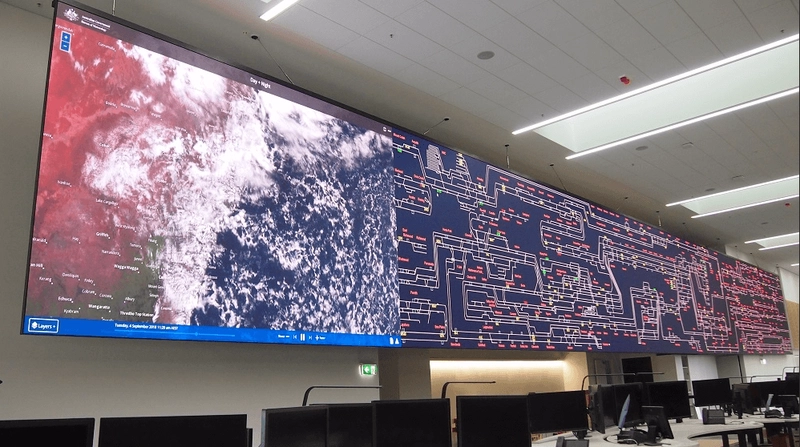Today, with the rapid iteration of LED display technology, the terms "small pitch", "Mini LED" and "Micro LED" frequently appear in industry discussions, but the differences between them are confusing many people. As an observer in the LED industry, I will use the most straightforward language to analyze the essential differences and application scenarios of these three technologies for you.
- Technical definition: From physical dimensions to structural revolution
Small-pitch LED is the earliest concept. Simply put, it refers to a product with a point spacing (pitch) of an LED display screen less than 2.5 mm. The "pitch" here refers to the distance between the center points of two adjacent LED beads. The smaller the value means that more LED beads can be stuffed in the same area, thereby achieving a higher definition display effect. Small pitch LEDs are essentially still a technical extension of traditional LED displays, but the lamp bead size and spacing are reduced through more precise manufacturing processes. What is a fine pitch LED display?
Mini LED represents a technological upgrade, which specifically refers to products with LED chip sizes ranging from 100-300 microns. This size range is between traditional LEDs and Micro LEDs. The core innovation of Mini LED is not simply reducing the size, but rather that it usually uses flip chip structures and more advanced packaging technology to achieve better heat dissipation performance and higher brightness. Here is Mini LED: a comprehensive overview.
Micro LED is a real technological revolution. Its chip size is less than 100 microns (about 1/10 of the diameter of human hair). It uses unpackaged or micropackaged technology, and each Micro LED pixel can emit light independently. This technology completely abandons the traditional LED packaging form and directly transfers micron-scale LED chips to the driver backplane, achieving a qualitative leap in display technology. Here is Micro LED: a comprehensive overview.
- Performance comparison: the difference from application to experience
In terms of display effect, the dot spacing of small-pitch LEDs currently ranges between 0.9mm-2.5mm, and the optimal viewing distance is more than 3 meters; Mini LED adopts more dense bead arrangement (can achieve 0.3mm-1.0mm spacing) and local dimming technology, the contrast can reach 1000,000:1, far exceeding the 3000:1 of small-pitch LEDs; and Micro LED can theoretically achieve pixel-level precise control, with nearly unlimited contrast and no visible pixel grain feel.

The differences in application scenarios are more obvious:
Small-pitch LEDs are still the main force in conference rooms, monitoring centers, and outdoor advertising, and the prices are relatively affordable. Provide you with a complete guide to outdoor LED display prices, purchase and application guides.
Mini LED is mainly used in high-end commercial display and consumer TV markets, and the screen of Apple iPad Pro is a typical example.
Micro LED is currently only found in sky-high commercial large screens (such as Samsung The Wall) and special areas, and cost is the biggest obstacle to popularization.
In terms of technological maturity, the small-pitch LED industry chain is complete, with a yield rate of more than 99%; Mini LED is in a rapid growth period, and the cost is reduced at a rate of 20% per year; Micro LED is still facing huge process problems such as transfer and repair, and it will take some time to produce large-scale mass production.
- Future trends: coexistence or substitution?
From the perspective of technological evolution, these three technologies are not simple alternative relationships, but technical branches targeting different market needs. It is expected to be in the next 5 years:
Small-pitch LEDs will extend to the P0.4-P0.9 interval, improving reliability and viewing experience through COB packaging technology, and maintaining competitiveness in the mid-range market. Mini LED vs COB packaging: a technical choice from the user's perspective!
Mini LEDs will accelerate penetration into medium-sized displays, and as costs drop, it is expected to become the mainstream choice for high-end TVs and on-board displays.

Micro LED will be the first to establish its advantages in the ultra-large screen market above 100 inches. After a huge breakthrough in transfer technology, it may trigger a revolution in consumer electronic displays.
It is worth noting that these three technologies are constantly evolving boundaries. Nowadays, some display screens that use Mini LED chips are also called "small pitches", and technological breakthroughs in Micro LED may in turn affect the development path of Mini LED. For end users, which technology to choose depends on budget, usage scenario and level of pursuit of image quality, rather than simply pursuing "the latest and best".
Understanding the differences between these three technologies will help us make rational choices in the dazzling market promotion. Whether it is commercial procurement or personal consumption, only by recognizing the essence of technology can we avoid paying for unnecessary "future technology".

Thank you for watching. I hope we can solve your problems. Sostron is a professional LED display manufacturer. https://sostron.com/about-us/ We provide all kinds of displays, display leasing and display solutions around the world. If you want to know: Full-color LED large screen makes financial services "smart"! Please click read.
Follow me! Take you to know more about led display knowledge.
Contact us on WhatsApp:https://api.whatsapp.com/send?phone=+8613510652873&text=Hello



